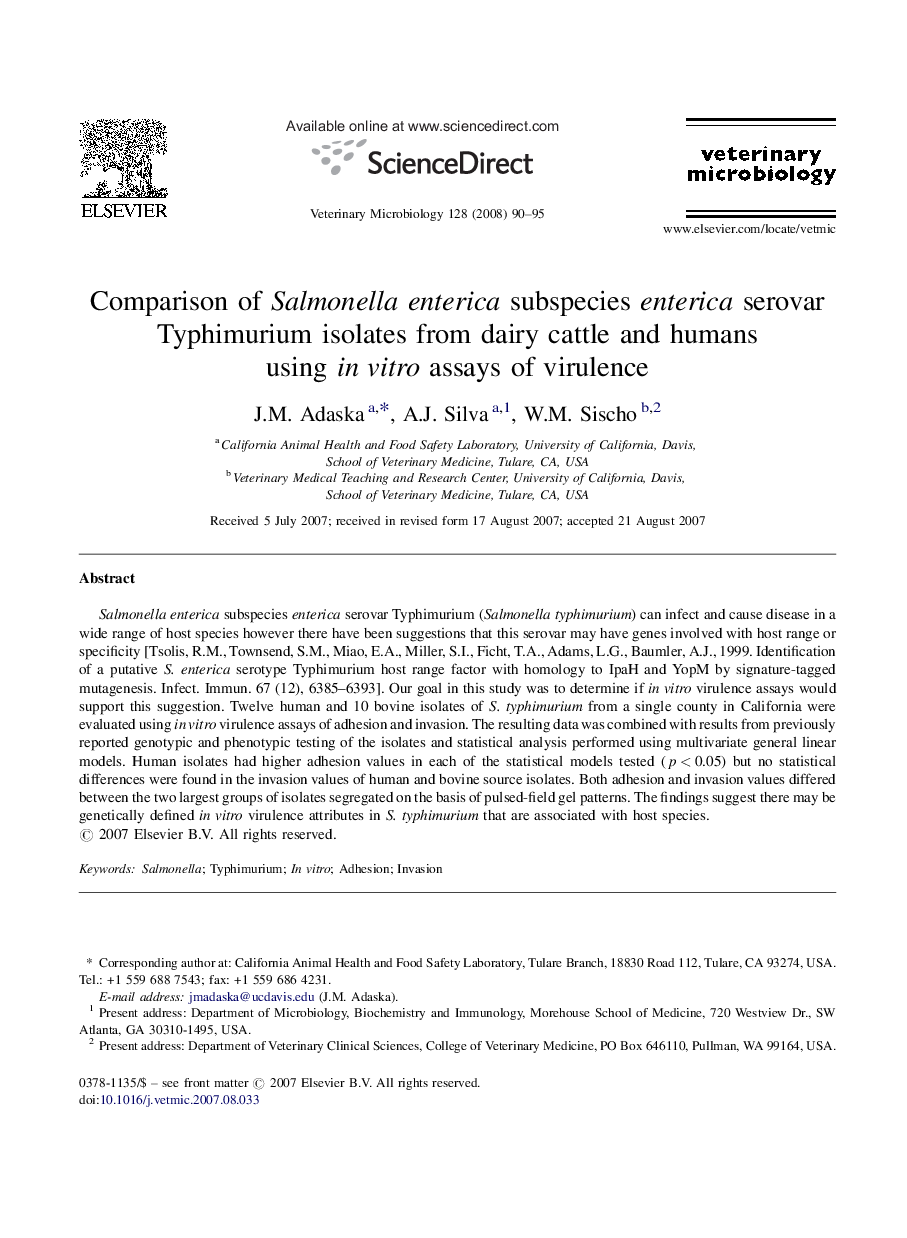| کد مقاله | کد نشریه | سال انتشار | مقاله انگلیسی | نسخه تمام متن |
|---|---|---|---|---|
| 2468997 | 1555442 | 2008 | 6 صفحه PDF | دانلود رایگان |

Salmonella enterica subspecies enterica serovar Typhimurium (Salmonella typhimurium) can infect and cause disease in a wide range of host species however there have been suggestions that this serovar may have genes involved with host range or specificity [Tsolis, R.M., Townsend, S.M., Miao, E.A., Miller, S.I., Ficht, T.A., Adams, L.G., Baumler, A.J., 1999. Identification of a putative S. enterica serotype Typhimurium host range factor with homology to IpaH and YopM by signature-tagged mutagenesis. Infect. Immun. 67 (12), 6385–6393]. Our goal in this study was to determine if in vitro virulence assays would support this suggestion. Twelve human and 10 bovine isolates of S. typhimurium from a single county in California were evaluated using in vitro virulence assays of adhesion and invasion. The resulting data was combined with results from previously reported genotypic and phenotypic testing of the isolates and statistical analysis performed using multivariate general linear models. Human isolates had higher adhesion values in each of the statistical models tested (p < 0.05) but no statistical differences were found in the invasion values of human and bovine source isolates. Both adhesion and invasion values differed between the two largest groups of isolates segregated on the basis of pulsed-field gel patterns. The findings suggest there may be genetically defined in vitro virulence attributes in S. typhimurium that are associated with host species.
Journal: Veterinary Microbiology - Volume 128, Issues 1–2, 1 April 2008, Pages 90–95